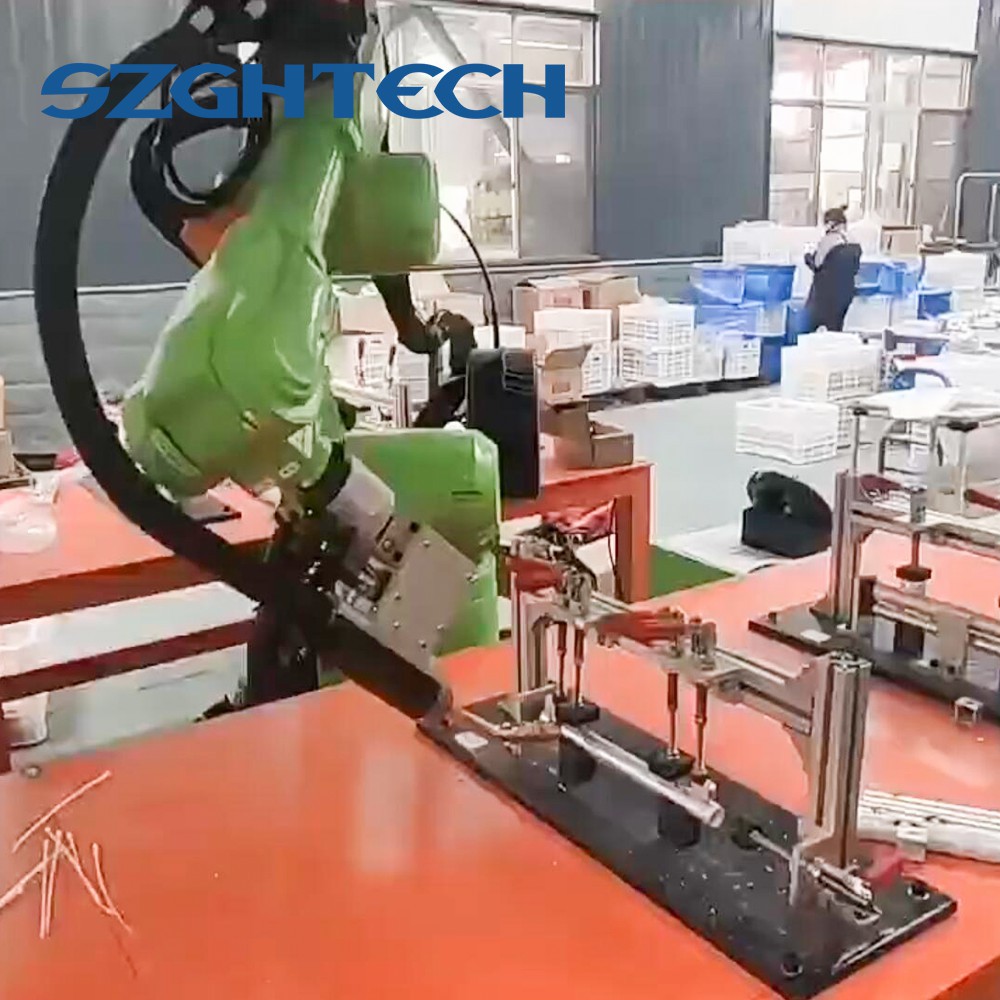The application of welding equipment in production by enterprises means the pursuit of high efficiency and high welding quality. Therefore, many enterprises seek breakthroughs in welding speed, and the high precision of welding equipment in trajectory control is a reliable guarantee for high-speed welding.
In recent years, with the development of industrial robots, whether robots will replace humans has become one of the hottest topics in this era, especially as industrial robots "customize" welding robots. Robot welding is said to be more than twice as fast as manual welding! It is said that the welding speed of the robot is the same as manual welding, because their parameters are basically the same. What is the general welding speed of welding robots? Is there anything I need to pay attention to?

Firstly, Robot welding speed
1. Using welding robots to weld can improve production efficiency
The six-axis welding robot has short response time and fast action. The welding speed is 50-160cm/min, much higher than manual welding (40-60cm/min). The robot does not stop during operation. As long as the external hydroelectric conditions are guaranteed, the works can continue. The high-quality six-axis robot has stable performance and is reasonable to use. Under the premise of maintenance, no failure within 10 years. This actually increases the productivity of the business.
2. Robot welding can improve product quality
In the robot welding process, as long as the welding parameters and motion trajectory are given, the robot will accurately repeat this action. Welding current and other welding parameters. Voltage welding speed and welding elongation play a decisive role in the welding effect. In the robot welding process, the welding parameters of each weld are constant, and the welding quality is less affected by human factors, which reduces the requirements for workers' operation skills, and the welding quality is stable, which ensures the product quality.
3. Robot welding can shorten product transformation cycle and corresponding equipment investment
Robot welding can shorten the product transformation cycle and reduce the corresponding equipment investment. It can realize the welding automation of small batch products. The biggest difference between robots and special machines is that they can be adapted to the production of different workpieces.
During the product update process, the robot body can redesign the corresponding fixtures according to the new product, and update the product and equipment without changing and calling the corresponding program commands.
Secondly, Technical parameters of welding robot
1. The number of joints. The number of joints can also be called degrees of freedom, which is an important indicator of robot flexibility. Generally speaking, the robot working space can achieve three degrees of freedom, but welding not only needs to reach a certain position in the space, but also needs to ensure the spatial posture of the welding torch.
2. The rated load refers to the rated load that the end of the robot can bear. The loads we mentioned include welding torches and their cables, cutting tools, gas hoses and welding tongs. For cables and cooling water pipes, different welding methods require different rated loads, and different types of welding tongs have different load capacities.
3. Repeat positioning accuracy. Repeatability is the repeatability of the trajectory of the welding robot. The repeated positioning accuracy of arc welding robots and cutting robots is more important. For arc welding and cutting robots, the track repeatability should be less than 1/2 of the wire diameter or cutting tool hole diameter, usually ±0.05mm or less.
What is the welding speed of the robot? What are the technical parameters?
When choosing a welding robot, you must choose the appropriate technical indicators according to your workpiece. The technical parameters of the welding robot include the welding function of the number of joints, rated load, welding speed and repeat positioning accuracy. At a production rate of 60%, the welding robot can weld 350 angle steel flanges per day, which is five times the production efficiency of skilled welders. In addition, the welding quality and stability of robots are higher than manual welding products. The welding is accurate and beautiful, and the speed is amazing! This project replaced the traditional welding work of artificial ventilation pipe flanges, steel brackets and other steel components, greatly improving the welding quality and production efficiency.
The above content is about the welding speed of the welding robot. There is an introduction to what needs to be paid attention to, and I hope it can help everyone. The items welded by welding robots have beautiful appearance, consistent weld seam, and high production efficiency, which is unmatched by manual welding technology. Therefore, more and more welding robots are used in welding production.

